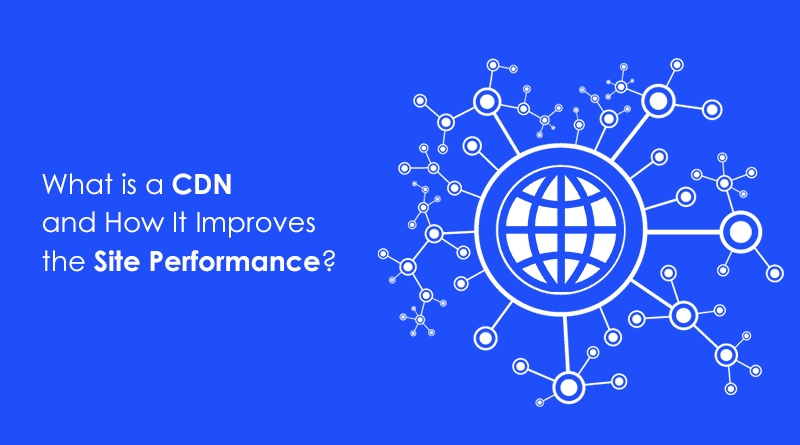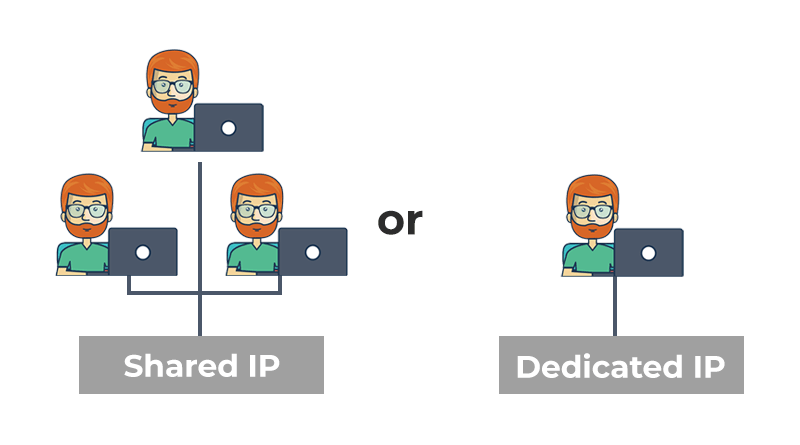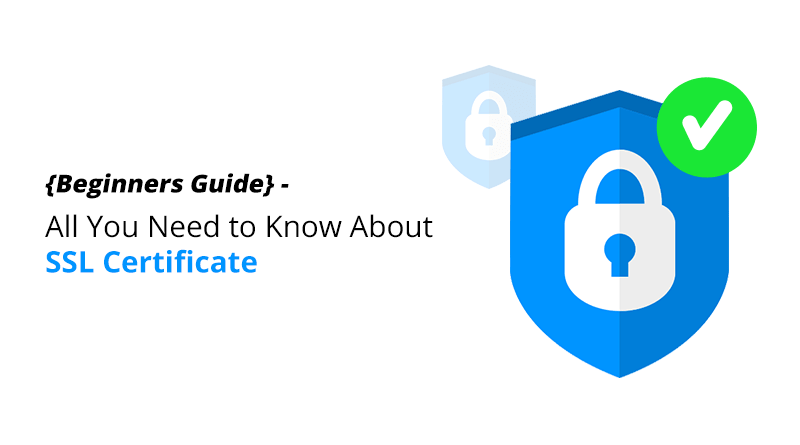Do you know that the web content needs to travel through several networks to get displayed on your computer?
What you do is type the website address into your browser. It means you request for the content.
After this the request is sent to a server wherein all the website content is stored. The computer “serves” the content to you by completing your request.
The working of internet is very much interesting.
In this article, we are going to discuss about CDN. CDN is the abbreviation for Content Distribution Network.
As per the name, a CDN is a network of servers developed for the strategic and efficient distribution of content. But their impact on your site performance is big.
Let’s dive deep into CDN and get the answers to the following questions:
- Why are CDNs needed?
- How do they work?
- How can you use a CDN?
- Are CDNs secure?
Understanding the CDN
A content delivery network (CDN) is a geographically distributed network of servers that work together for providing secure and fast delivery of the online content. With a CDN, assets can be transferred quickly for loading internet content including the JavaScript files, HTML pages, stylesheets, videos and images. CDN services continue to grow popular and today, the majority of web traffic is served via CDNs including traffic from big sites such as Facebook, Amazon and Netflix.
When a CDN is properly configured, it might also help to protect websites against some common malicious attacks, such as Distributed Denial of Service (DDOS) attacks.
The Need for CDNs
If there is something that helps to transfer the data at a faster rate on the internet, it is quite valuable. You might have observed that CDNs have gained fame due to their ability to offer a faster, smoother and more user-centered experience to people all around the world.
When the attention spans get shorter and shorter, it is a sign of needing a fast website growth. As per some studies it’s been observed that even a one-second delay leads to a 7% drop in conversions, an 11% drop in page views, and a 16% drop in customer satisfaction.
In case one server receives millions of requests from around the world for the same website, the server would get a lot of pressure.
If those requests get distributed among several other servers in different locations, it is always better. Due to this the websites get prevented from crashing or loading too slowly, therefore, CDNs are so amazing!
The CDNs help in reducing physical distance between the user and the content that you want to view, leading to faster load time and enhanced site performance.
You will find that CDNs too can have a big impact on user experience. This is because, with them users can see a website in a customized way depending on from where they’re accessing it.
For instance, if a user is browsing a website from France, and the site is on a CDN, it can help serve the content in French by offering a cached version that’s unique to users in France. It means that all the content on the website would be France-specific with the goal to provide a completely French website experience.
Working of a CDN
You already know that CDNs are huge network of servers based globally. In a CDN, the main host server comprises of the original content, along with other distributed servers that comprise of a cached version of the website.
For example, the Amazon website would be stored on a US –based host server, while a cached version of it would be located on all the globally distributed servers. You will find that the content of each cached version is modified as per the language of its server’s location.
From the above image, you will see a simplified CDN. The server from where the content has originated is called as the “POP,” or Point of Presence. This is where the original content is stored. An interaction between the POPs and caching servers takes place to send and receive content requests to end users.
This is all in the working of a CDN. After going through this, you will see that a CDN’s working isn’t really that complicated.
Consider Using a CDN Because…
CDNs help in Front End Optimization or FEO that helps in reducing the file sizes and decreasing the requests required for loading a webpage. This actually means eliminating the slowness in content delivery.
Maybe the greatest benefit of CDNs is they create a way for the scalability of internet traffic. With them, it becomes easy for you to reach a huge audience and offer a great user experience on your site.
CDN offers several other benefits as below:
The benefits of using a CDN are different based on the size and needs of an Internet property. However, the primary benefits for normal users can be broken down into 4 different components:
Improving website load times – When the content is distributed closer to website visitors with the help of a nearby CDN server (among other optimizations), visitors get faster page loading speed. Visitors are expected to click away from the slow loading site and so, a CDN can reduce bounce rates and increase the amount of time that people spend on the site. In other words, a faster a website means more visitors will stay and stick to your website for a long time.
Reducing bandwidth costs – In website hosting, the cost for bandwidth consumption is a key expense for websites. CDNs can reduce the amount of data an origin server needs to provide via caching and other optimizations. This reduces the hosting costs for website owners.
Increasing content availability and redundancy – There can be interruption in the functioning of a normal website due to large amounts of traffic or hardware failures. But the distributed nature of CDNs helps to manage more traffic and resist hardware failure better than many origin servers.
Improving website security – Since a CDN provides DDoS mitigation, it improves security certificates, and other optimizations.
All these are pretty good reasons to start using a CDN!
But one key situation in which you would not need to use a CDN is when you’re planning to serve content completely to users in a specific location. For example, if your target audience is only in New York City then the location-specific, cached versions of your content won’t be valuable.
Below are the types of businesses that typically need to use a CDN:
- eCommerce stores that sell products at different locations globally;
- Government websites that offer information to international travelers;
- Marketplaces such as eBay or Amazon that connect international buyers and sellers;
- Content platforms similar to Youtube which distribute the content globally.
How Can You Use a CDN?
CDN is included as an add-on feature by several hosting providers so that the customers can set up a website.
Also, there has been a drop on the cost for hosting providers to offer a CDN in recent years.
If you get an access to a CDN with the hosting plan, you will need to make a few changes in the configuration in your website’s control panel. Modifying the root domain DNS configurations, directs the traffic that goes from an origin server to a CDN, helping to reach your content to the long distance users.
A CDN Keeps a Website Always Online
For any website owner, it is very important for the website to always remain up. Situations such as spikes in traffic and hardware failures can occur due to boost in popularity or malicious attacks, and this can ultimately bring down a web server and users won’t be able to access the site. A well-formed CDN offers several features that reduce the downtime:
- With load balancing the network traffic gets evenly distributed across several servers, so that it can scale as per the rapid boosts in traffic.
- You get uninterrupted service with the intelligent failover even if one or more CDN servers go offline due to hardware malfunction. The traffic can be redistributed to the other operational servers with the failover.
- When an entire data center faces technical issues, Anycast routing transfers the traffic to another available data center, so that users don’t lose access to the website.
Is CDN Secure?
CDNs are secure as well as prevent cyber attacks on the origin server. Hackers can easily access the cached content from local servers near them but the original content remains safe. Therefore, a CDN is safe to use as it protects your significant content store online.
The next important security feature of a CDN is that the data and content that is transferred is generally encrypted with the use of Secure Sockets Layer (SSL) connection. This indicates that it is secure from the external access or manipulation.
Additionally, as sending content to international users via local servers requires less time as compared to serving content from the origin server requires, a CDN improves data security by restricting the time for the content to become vulnerable.
The Bottom Line
Therefore, it is highly recommended to use a CDN. This is because it offers fast content delivery and has the ability to serve location-specific versions of your content. This helps users all over the world to get a better experience on your website.




